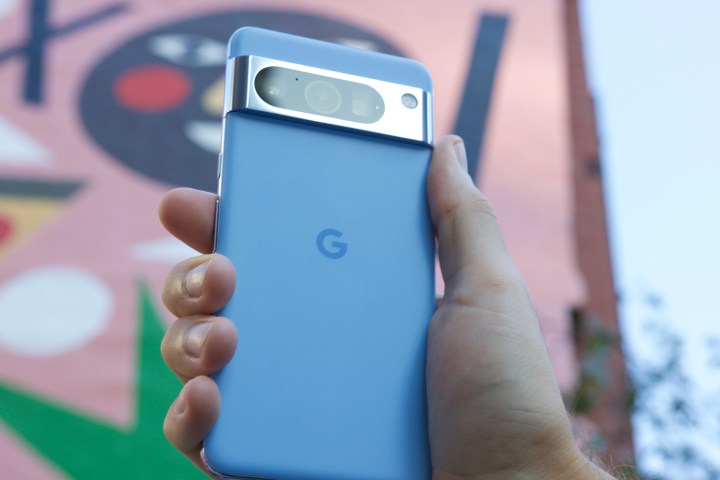
Google launched the Pixel 8 series earlier this month with notable design improvements over the last generation, including a brighter display, faster charging, and more. One of the most exciting changes on the Google Pixel 8 and the Google Pixel 8 Pro is Google’s new custom Tensor G3 chipset that delivers spectacular AI experiences right on the device.
Despite advancements in on-device AI processing, Google’s Tensor chips have traditionally been reported to lag behind other flagship chipsets when it comes to performance. This year, the chipset receives substantial microlevel upgrades that bring it closer to the competition, at least on paper.
So, does the Tensor G3 stand a chance against stalwarts like the Snapdragon 8 Gen 2 and Apple A17 Pro? That’s what we are looking at in this comparison.
Tensor G3 vs. Snapdragon 8 Gen 2 vs. Apple A17 Pro

We’ll dig into the finer details of Tensor G3 in just a minute, but first, here’s the full spec sheet for the Tensor G3, Snapdragon 8 Gen 2, and A17 Pro chips.
Specs and raw numbers don’t always tell the whole story, but just so you have some context, this is what we’re working with:
| Google Tensor G3 | Qualcomm Snapdragon 8 Gen 2 | Apple A17 Pro | |
| CPU |
|
|
|
| GPU | 7-core Immortalis-G715 | 8-core Adreno 740 | 6-core “Pro-Class” GPU |
| Neural processor | Custom Google TPU | Qualcomm Hexagon AI Engine | 16-core Neural Engine |
How the Tensor G3 chip was made

Google’s Tensor G3 chip is based on Samsung’s 4-nanometer (4nm) fabrication process, marking an upgrade over the Tensor G2, which is fabricated on Samsung’s 5nm process. The dimensions in nanometers do not indicate the size of the chipset itself, but have traditionally been used to denote the minimum gate length for transistors — or tiny electronic switches — that make up the entire circuitry. Smaller transistors can be packed more densely on the same surface area, allowing more power and better flow of electrical signals through the board.
However, with advancements in computing technology, the nanometer variable has lost its definition and is used differently by different chip manufacturers — simply reducing it to marketing jargon. Without stressing how manufacturers determined this number, here’s a simpler explanation of how it matters: a smaller value indicates better power efficiency so long as the same or a similar process makes the chip. Therefore, it’s safe to say that Samsung’s 4nm node is better than its 5nm from last year.

Besides being upgraded to a more power-efficient design, the Tensor G3 also conquers issues that marred the performance of the Tensor G2 and other chips manufactured on Samsung’s 5nm process last year. In 2022, Samsung reportedly suffered a poor yield per silicon wafers used. This impacted the performance of the Exynos 2200 — which powers the Samsung Galaxy S22 series in the U.K. and Europe — alongside the Snapdragon 8 Gen 1, which is also manufactured by Samsung. As a result of poor yield, these chips turned out to be more power-hungry.
Samsung’s poor yield for the 5nm node resulted in Qualcomm switching over to Taiwan’s TSMC — Samsung’s biggest competitor that also manufactures Apple’s A and M series chips — for the Snapdragon 8+ Gen 1. By migrating to TSMC, Qualcomm achieved better power efficiency and boosted CPU and GPU performance on the Snapdragon 8+ Gen 1 and the Snapdragon 8 Gen 2. Google, despite these complaints, stuck with Samsung.
In 2023, Samsung reportedly ironed out those issues and reached higher yields. While Qualcomm is sticking to TSMC for the Snapdragon 8 Gen 3, improvements to Samsung’s yields mean significant improvements over the chipsets from last year. To our surprise, however, Samsung decided to cancel its own Exynos 2300 this year for unknown reasons, but uses a similar architecture for the Tensor G3’s microarchitecture.
Google’s Tensor G3 has an odd CPU design

The Google Tensor G3 gets an unusual nine-core CPU. While most Android phone chipsets still rely on an eight-core design, Tensor G3 is an exception and has a nona-core CPU configuration. Like previous Tensor chips for Pixel devices, the G3 is expectedly based on a Samsung Exynos counterpart, albeit with custom additions over the top for better AI applications, improved image processing, and better security. It shares its core architecture with the canceled Exynos 2300.
The nine CPU cores are split across a 1+4+4 configuration. Like most other chipmaking companies, Samsung also licenses IP from Arm, which provides the basic designs for other companies to customize or configure for optimal performance. Google’s Tensor G3, as a result, carries the same attributes forward.
The Tensor G3’s nine-core CPU comprises an Arm Cortex X3 “big” core clocked at 2.91GHz for prime performance and power-hungry tasks such as heavy games — the same that we’re seeing on other flagship Android chipsets for this year, i.e., the Snapdragon 8 Gen 2 and MediaTek Dimensity 9200.
Next, there are four Cortex-A715 “middle” cores clocked at 2.37GHz for a balance between performance and power efficiency. In comparison, the Snapdragon 8 Gen 2 uses two Cortex A715 cores and two A710 cores for the middle section. Although the A715 and A710 are nearly identical, the former is claimed to offer a 20% improvement in power efficiency. This means the Tensor G3 can be expected to produce less heat in middling tasks such as launching and running apps.
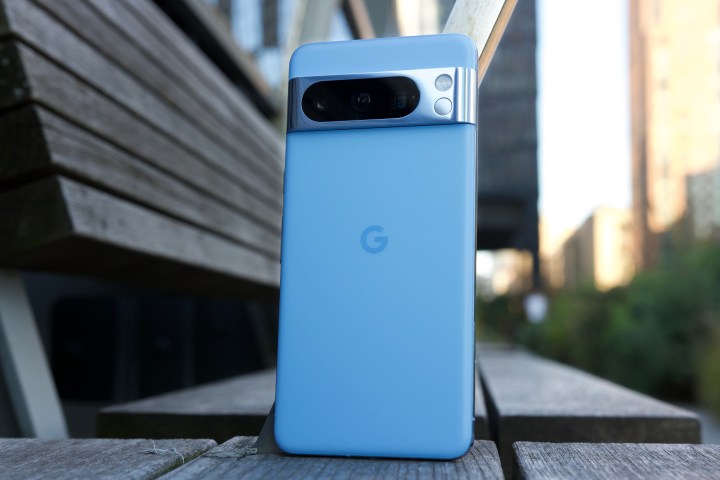
The “little,” or efficiency-focused section of the CPU, is identical to other comparable chipsets. Tensor G3 uses four Cortex-A510s, each clocked at 1.7GHz. This is an upgrade over the Tensor G2, which uses dated Cortex A55 efficiency cores. Having a lower frequency than the Snapdragon 8 Gen 2’s efficiency block, these cores will produce less heat, but might offload some of the more demanding tasks, such as keeping the always-on display running, basic phone functions, powering sensors, etc., onto the middle cores if the need arises.
Despite the advanced CPU configuration, the Tensor G3 still appears late to the party. Arm has already announced the more powerful Cortex X4, A720, and A520 cores. The Snapdragon 8 Gen 3, expected to launch later this month, is still rumored to retain an eight-core design, but with newer Arm cores.
These upgrades do not necessarily translate to massive improvements in daily output despite claims by chipmakers. To test the real-world implications of these improvements, we ran Geekbench 6 synthetic benchmarks on the Google Pixel 8 Pro, iPhone 15 Pro, and OnePlus 11 running on Snapdragon 8 Gen 2. We could have also included the Samsung Galaxy S23 Ultra, but it runs a custom, overclocked version of Snapdragon 8 Gen 2 for Galaxy devices, and the results may not align with other phones with the chipset.
Here are the results:

The Pixel 8 Pro and the OnePlus 11 have comparable performance owing to having the same primary core. The multi-core scores vary, which is understandable because of the lower clock speeds on the Tensor G3. It is, however, surprising that the extra core does not offer a competitive advantage.
The iPhone 15 Pro gets a massive advantage over both the Tensor and the Snapdragon 8 Gen 2 due to a much higher frequency on the primary core, as well as having two of those instead of just one, Apple’s customizations to Arm’s design, and overall improvements due to the 3nm design.
Testing the Pixel 8’s gaming performance

The Tensor G3 inside the Pixel 8 and Pixel 8 Pro gets Arm’s Mali-G715 “Immortalis” GPU, with performance comparable to the Adreno 740 GPU on the Snapdragon 8 Gen 2. Despite leaks, the Tensor G3 only uses a seven-core GPU, with subtle improvements over the Tensor G2’s seven-core graphics unit.
Notably, MediaTek’s Dimensity 9200 uses the same GPU, but with 10 cores enabled. Theoretically, the GPU can support up to 16 cores, but Google’s decision to limit the number to seven suggests an attempt to keep the heat generation in check.
Gaming has never been the Pixel’s strong suit, and Google has omitted any mentions of ray tracing on the Pixel 8 Pro despite having the hardware to support it. Ray tracing is a feature that enables realistic lights and reflections, primarily in games, for more appealing visuals. While Android flagships have featured ray tracing support since at least 2021, Apple added to the momentum by announcing hardware-based ray tracing on the iPhone 15 Pro using the A17 Pro chipset.
The Tensor G3’s Immortalis-G715 GPU offers a 15% performance boost over the previous year’s Mali-G710, as per Arm. This does not change the fact that the GPU was first introduced in 2022; the newer Immortalis-G720 offers yet another 15% upgrade over it alongside reduced load on the CPU and better power efficiency. With the Snapdragon 8 Gen 3, the competition will be more challenging for this GPU.
Of course, actual performance may vary from marketing claims, so we ran 3DMark’s Wildlife Extreme synthetic benchmark on the Pixel 8 Pro and compared those results to the iPhone 15 Pro and OnePlus 11. Here’s what we found:

Interestingly, the Snapdragon 8 Gen 2 on the OnePlus 11 overpowers the iPhone 15 Pro’s GPU. The Tensor G3 in the Pixel 8 Pro, on the other hand, lags both by a long margin, suggesting poorer graphics processing capabilities.
Neural processor and AI features
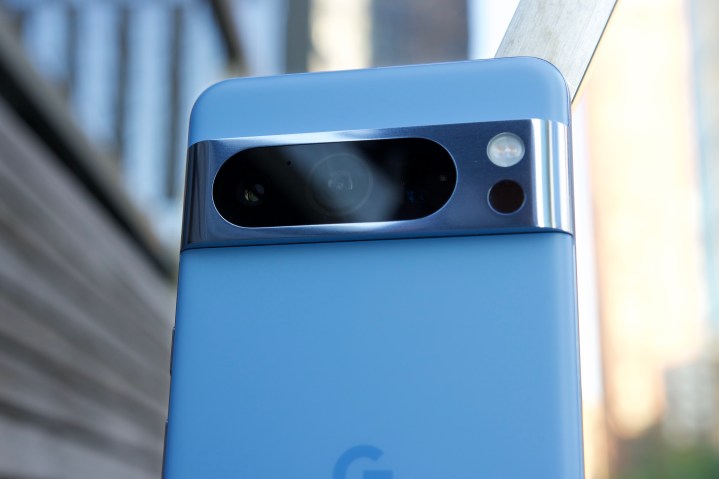
Experiences associated with AI have been at the center of Google’s narrative behind the shift to a custom silicon over two years ago. This not only continues with the Pixel 8 series, but also takes a massive leap over previous generations as the buzz around generative AI grows more intense.
The Pixel 8 and the Pixel 8 Pro get a massive boost for AI camera features, with features such as Best Take and Magic Editor fantastically transforming images. Besides the Camera app, Google Assistant receives major upskilling in human-like communications with the integration of Google’s Bard chatbot.
These experiences are powered by Google’s new Tensor Processing Unit (TPU), a marketing name for the company’s neural processors dedicated to accelerating AI-related tasks. The name is derived from eponymous processors used in Google’s servers designed specifically for machine learning-related tasks. It is also one of the components that Google is designing itself instead of piggybacking on Samsung’s Exynos.

According to Google, the new TPU runs twice as many machine learning models as the first-gen Tensor that drove the Pixel 6 and 6 Pro. One of the key talking points for Google’s Tensor chipsets has been their ability to run all machine learning algorithms, especially related to the Google Assistant, right from the phone — without having to upload queries to a cloud server for processing, as most other Android phones do. Google says with the new Assistant and other generative AI features, on-device processing is 150 times more complex than it was a year ago. The new TPU is designed with keeping those requirements in mind, Google claims.
Digital Trends Mobile Editor Joe Maring’s experience throughout his Google Pixel 8 Pro review has been consistent with Google’s claims. But with Google promising seven years of software updates, it will be worth watching how this section of the Tensor G3 chipset ages — or rather, avoids aging, especially since older Pixels have not had a convincing record in this regard.
One of the key features that the Tensor G3’s improved TPU enables is a more secure Face Unlock on the Pixel 8 series. Even though the Pixel 8 and 8 Pro lack any dedicated hardware to scan the contours of your face accurately, the TPU enables the phones to run sophisticated machine learning algorithms that will offer a high degree of accuracy while detecting faces — the highest on Android so far.
How the Tensor G3 handles image processing
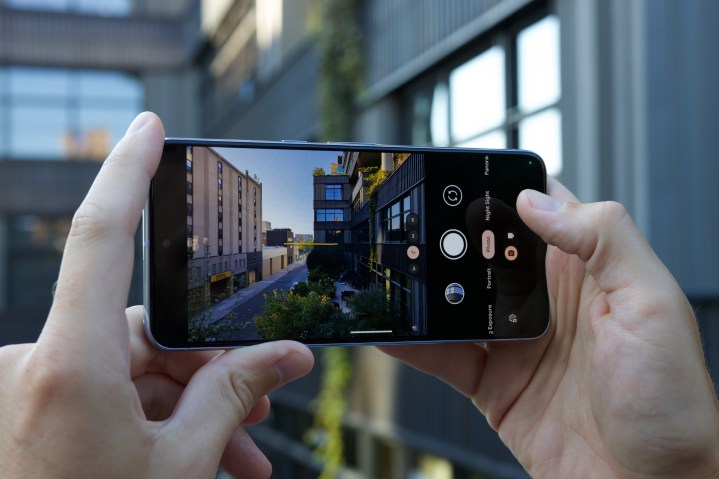
The Tensor G3 also gets a slightly improved digital signal processor (DSP) for improved image and video processing. While there aren’t significant changes at the hardware level, Google claims to have “optimized the camera pipeline and built machine learning algorithms directly into the silicon” to offer a major boost in photos and especially videos.
One of the key benefits is the improvements to Pixel’s Live HDR feature, which means the phones give you a preview of the HDR shot that’s closer to what they will turn out to be. In addition, the Pixel 8 is the first Android device to support Ultra HDR images. This means the metadata related to HDR is attached to the image.
The HDR in these images appears more realistic on displays that support HDR instead of being implemented as blanket visual change to the images, much like video content with HDR or Dolby Vision. Similarly, on displays that do not support HDR, these images scale back to their non-HDR versions instead of appearing dull and dark as they previously would.
Apple devices, specifically the iPhone 13 and above, already support a similar feature called ISO HDR that allows HDR images to appear richer on HDR-supported screens.
As XDA’s Dylan Raga writes on Reddit, this format is exciting and can be seen as the future of HDR photography, especially with widespread and universal adoption across devices. The Pixel 8 sets the stage for more Android devices to adopt this feature, but it will also tense up the camera pipelines on the chipsets, which is where Tensor G3’s improvements to the DSP come in handy. More importantly, it will be exciting to see how these hold up throughout the Pixel 8’s promised seven years of lifetime — and if Google can keep refreshing abilities solely through software updates.
Tensor G3 overheating problems

One of the most pressing concerns we have encountered from previous Pixel devices, including the recently launched Google Pixel Fold with a Tensor G2 chipset, is excessive heating. To counter the effects of prolonged heating under stress, chips also come with built-in algorithms that limit the performance to reduce heat. This is commonly known as “throttling.” Every chip undergoes throttling to some extent, but excessive throttling, especially on moderate loads, can be detrimental to performance.
In his Pixel 8 Pro review, Maring noticed the phone only got slightly warm, but never uncomfortably hot, even after gaming. This is a good sign, but to test things further, we ran the 3DMark’s Wild Life Extreme Stress test, which comprises rigorous tasks over 20 minutes continuously. As the name suggests, the test stresses the chipset, especially the GPU.
The results conform the initial impressions: While the Pixel 8 Pro undergoes throttling through the stress test, temperatures did not rise beyond comfort levels. Starting at 26-degrees Centigrade (approximately 79-degrees Fahrenheit), the final internal temperature after 20 minutes of prolonged stress went only up to 40-degrees Centigrade (104-degrees Fahrenheit). This is the temperature at the GPU, and the external surface is relatively much cooler.
As for the drop in performance, the benchmark score dropped by about 15% in 20 minutes. This drop is considerable, although not unusual. Unless you’re gaming, you may not feel the difference, but you can expect some stuttering while recording long videos on the Pixel 8 or 8 Pro.
Meanwhile, the iPhone 15 Pro’s reported heating issues were recently fixed by Apple through an iOS update.
Is the Tensor G3 a good chip for the Pixel 8?
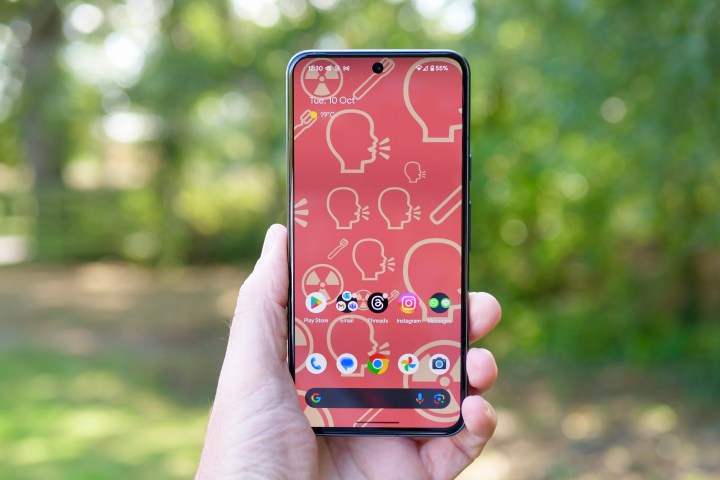
The Google Pixel 8 series has the most refined Pixel smartphones we have encountered since the inception of the series in 2016. It gets well-rounded improvements (not a pun for the design!) to the hardware, especially in the form of the advanced Tensor G3 chipset, which is not only more powerful than previous generations, but also runs noticeably cooler.
However, as we mentioned in the last section, consistently challenging processes can lead to throttling, which can mar your experience during gaming or similar intensive tasks. An upside of the throttling is that the Pixel 8 series will be more efficient in terms of battery, but you will still lose on vigor.
Google says its “work with Tensor has never been about speeds and feeds, or traditional performance metrics.” While it emphasizes progress in regard to on-device AI improvements, the almost-last-gen hardware is difficult to overlook and might severely jeopardize Google’s plans to keep the Pixel running for the next seven years. While it’s a long time to even predict the future of smartphones — let alone the Pixel 8 — the immediate performance lag compared to chips such as the Snapdragon 8 Gen 2 still stymies interest from performance enthusiasts and mobile gamers.

The bottom line for the Tensor G3 is that it remains focused on camera and AI improvements while running cooler than previous generations. It still feels like Tensor has much to catch up on in terms of raw performance, and it might with the next generation based on a much more powerful 10-core Exynos 2400 or Google’s fully independent hardware in 2025.
As difficult as it is to predict the future, what we can say right now is that the Tensor G3 chip inside the Pixel 8 and Pixel 8 Pro is a fine chip — good, even! What it’ll look like three or four years from now remains unclear, and there’s reason to be cautious about its aging process. But the G3 chip still delivers a lot to like right now, and if you’re thinking about getting the Pixel 8 or Pixel 8 Pro, you shouldn’t let it deter you from buying either one.
Editors’ Recommendations
